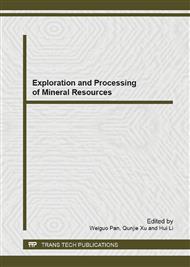p.692
p.696
p.700
p.705
p.711
p.718
p.725
p.730
p.737
Seal Characteristics and Leakage Model of Metallic Large-Diameter Lenticular Gasket
Abstract:
Through studying on the application principle of existing metal lenticular gasket, the structure design was finished, and design methods and calculating models of lenticular gasket larger than 6inch diameter were attained. Seal mechanism of the lenticular gasket and contact mechanics of the flange joint was analyzed by using finite element method. Stress state, contact width and contact deformation parameters of the lenticular gasket on working was obtained. Based on the analyzing results, leakage forecast model of metal lenticular gasket was presented. In the influencing factors of actual working state, such as inner pressure, outer pressure, medium viscosity, and surface roughness and so on, surface roughness is important, so surface machining precision of an in-use large-diameter lenticular gasket should be improved as far as possible. The conclusions will lay foundation for the future engineering application of large-diameter lenticular gasket.
Info:
Periodical:
Pages:
730-736
Citation:
Online since:
December 2013
Authors:
Price:
Сopyright:
© 2014 Trans Tech Publications Ltd. All Rights Reserved
Share:
Citation:


